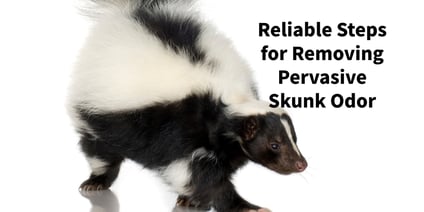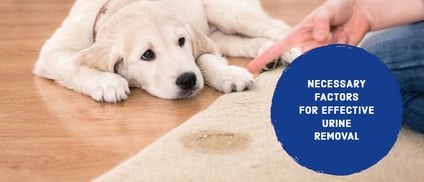Odor molecules will penetrate porous materials like carpets or fabric. Then they will gradually be released into the air. So, the odor may be emanating from someplace other than the original source of the odor. How deeply the malodor molecules penetrate depends largely on the size of the molecule. The effects of heat and pressure plus the time will affect the degree of penetration. Heat and pressure from fires, for example, can literally drive odors into the structure. Follow the four principles below to get the best possible results for your customers.
1. Eliminate the Source of the Odor
The universal first step in odor removal is to locate the source of the odor and eliminate it!
Seems like an obvious step, but it is often overlooked! In light to moderate odor control situations, odor control usually begins in the source area. This might mean taking out a pan of burnt beans or using a bacterial product to decompose the source of the odor.
2. Clean the Contaminated (Source) Area
Clean the source area. For pet urine, this often means flushing the urine out of the carpet and pad with a Water Claw extraction tool or similar tool. Misting some “smell good stuff” on an area where you still have contamination will most likely not eliminate the offensive odor. Clean all surfaces exposed to contamination.
3. Recreate the Conditions That Caused the Contamination of the Odor
Recreate the conditions of penetration. A basic rule of thumb: use a method to counteract the odor that closely matches the method that caused the odor – “recreate the conditions”. Did smoke fill the room?
The size of particles, surface voids, or droplets is measured in microns. A micron is equal to 1/1,000,000th of a meter. There are 25,400 microns in one inch. The human eye can detect particles as small as 8 to 20 microns. Because we want our deodorizer to reach everywhere the odor molecules penetrated, the deodorizing equipment we select to use will be greatly dependent upon the size of the odor molecule we are trying to neutralize. Maybe use a thermal fogger or other dry vapor machines to correct odors in vapor form. The key is to get the treatment everywhere the contamination went.
4. Seal the Area, if Necessary
If necessary, seal the area. Occasionally, it is advisable on various salvageable surfaces exposed to concentrations of heat or malodor, to seal or encapsulate the surface that was exposed to the contamination. This usually entails the use of a pigmented or clear alcohol-based sealing shellac or acrylic sealer.
by Scott Warrington



